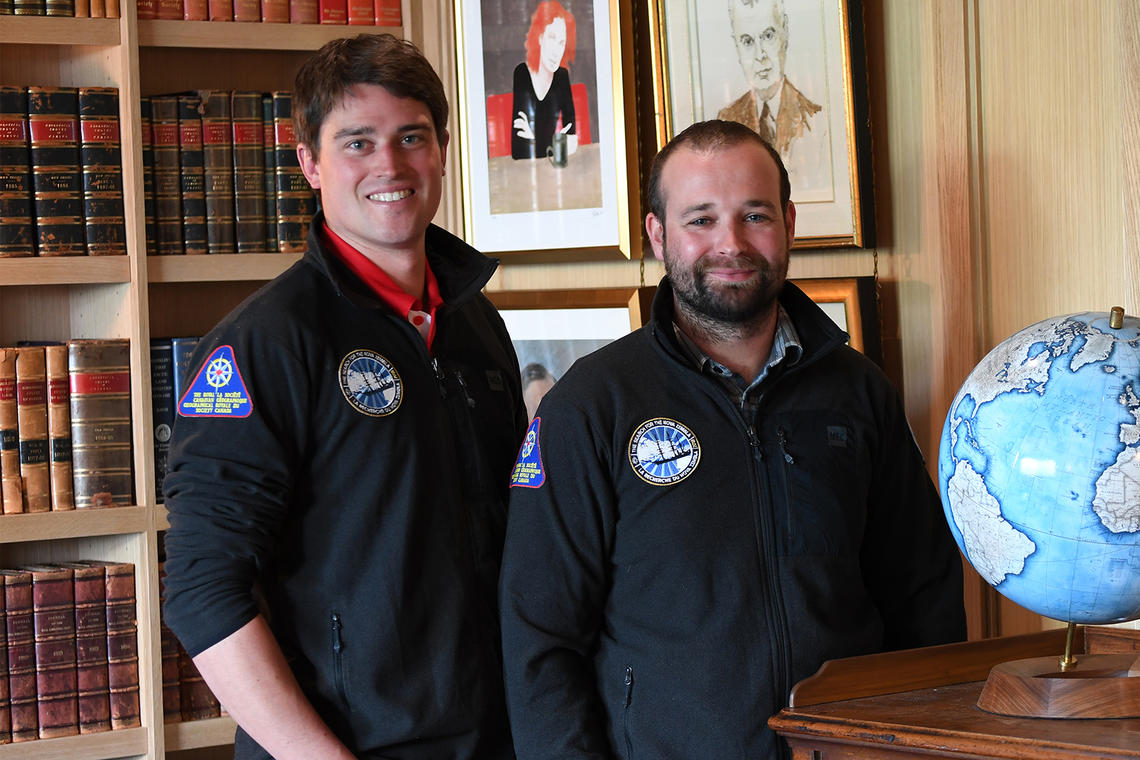
Michael Moloney, left, and Matthew Ayre.
Javier Frutos, Canadian Geographic
Sept. 13, 2018

Michael Moloney, left, and Matthew Ayre.
Javier Frutos, Canadian Geographic
Two researchers with the University of Calgary’s Arctic Institute of North America (AINA) have located the wreckage of a Scottish whaling ship which went down in a fjord near Baffin Bay during a storm in 1902. The discovery of what is believed to be the wreckage of the whaling vessel, Nova Zembla, is of great archaeological and historical significance because it is thought to be the first whaling wreck ever found in Canada’s High Arctic.
The researchers — Dr. Matthew Ayre, PhD, and Dr. Michael Moloney, PhD, postdoctoral fellows with AINA — embarked on their search for the Nova Zembla at the end of August. They first learned of the shipwreck thanks to Ayre’s research, investigating historical sea ice changes in the Arctic via the accounts in old marine logbooks.
Ayre came across detailed accounts of the wreck in the logbooks of fellow whaling vessels Diana and Eclipse, which rescued the Nova Zembla’s crew. Using those accounts, as well as old newspaper testimonials from the Nova Zembla crew, Ayre put together a comprehensive search grid for the shipwreck. Bringing the find to his AINA colleague, Michael Moloney, a marine archaeologist, the two were able to determine the likely location of the shipwreck within an area of less than five kilometres squared.
They felt further assured when another AINA colleague, geomorphologist Dr. Ravi Darwin Sankar, PhD, used satellite imagery and found an anomaly in the targeted zone that seemed to be about the size of a whaling ship.
“This really speaks to multi-disciplinary teamwork being done at the Arctic Institute,” notes Ayre. “I’m a historian and geographer who happens to be working with an underwater archaeologist and a geomorphologist who works with satellite imagery. That’s a rare combination and when we put our skills together, we can accomplish things which we couldn’t necessarily do separately.”
Confident they would be able to locate the wreck of the Nova Zembla, Ayre and Moloney partnered with the Royal Canadian Geographical Society and made arrangements for their search on an accommodating OneOcean cruise ship which was passing through Baffin Bay. Deploying an aerial drone and a remote-operated underwater vehicle, which allowed for sonar imaging, the team made their discovery.
The pair needs to further study the sonar imagery they captured. Evidence suggests that the imagery includes what appears to be one of the Nova Zembla’s anchors. Using the aerial drone they also found identifiable timbers on the beach with features contemporaneous to construction features on the Nova Zembla.
Moloney and Ayre plan on resuming their research at the previously unidentified archaeological site next year.
“We plan to return to the site and conduct a thorough survey,” says Moloney. “This is exciting from an archaeological perspective because there’s never been a Scottish whaling wreck discovered, that we know of. This could give us the opportunity to piece together what life was like on board a whaling ship in the early 20th century. How does that correlate with other historical documents? This will be a multi-year project which will help us learn about the history of whaling in the High Arctic.”
Adds Ayre: “No one has approached whaling history from this point of view. It’s an important discovery with great potential.”